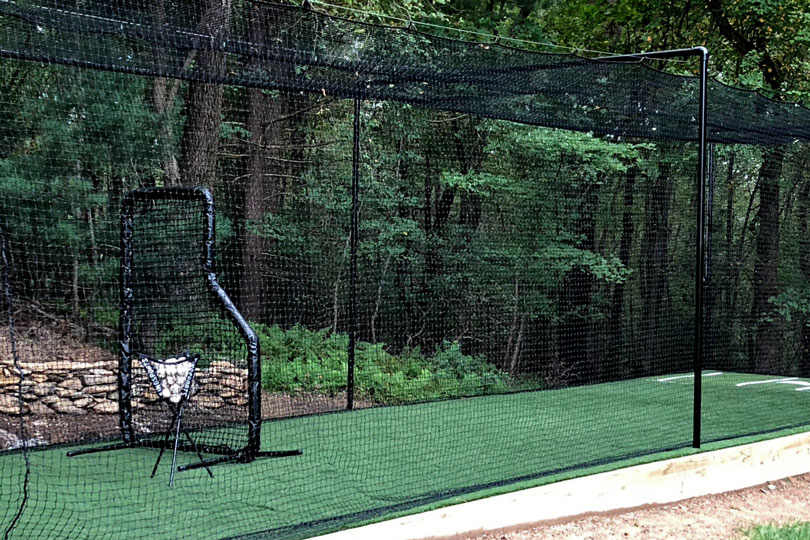6.2 Million U.S. Children Suffered Traumatic Brain Injuries From Sports Equipment From 2000 To 2019, With A Higher Increase Among Girls, Study Finds
[ad_1]
Topline
Traumatic brain injuries related to consumer products – mainly sports equipment – accounted for 12.3% of all consumer product-related children’s emergency room visits reported in the U.S. in 2019, a dramatic increase from 4.5% in 2000, according to a study published Thursday in the American Journal of Preventive Medicine, with incidence rates declining for boys since 2012, but not among girls.
A new study finds traumatic brain injuries increased 13% from 2000 to 2012, before decreasing 2% … [+]
Key Facts
The number of traumatic brain injuries from consumer products among children aged 5 to 18 that were treated in emergency departments increased by 3.6% from 2000 to 2008, followed by a 13.3% jump from 2008 to 2012 and a 2% drop between 2012 to 2019.
While boys had the highest incident rate of equipment-related traumatic brain injuries treated in 2019–681 per 100,000 vs. 376 per 100,000 for girls–girls have had a higher average annual increase in cases over the study span (5.1% vs. 2.8% for boys), and cases have declined 2.7% for boys since 2012 while among girls they’ve risen another 0.7% since 2011.
Some 27% of consumer product-related traumatic brain injuries that led to emergency department visits by children aged 5 to 18 from 2000 to 2019 occurred in sports and recreation areas, followed by at home (24%), schools (19.9%), and streets and highways (4.5%), according to the study.
Overall, football was the most common activity during which consumer-product-related brain injuries that led to emergency department visits occurred, with 734,967 reported cases, followed by bicycling (469,285) and basketball (396,613), researchers found.
Boys aged 11 to 13 made up the highest incidence rate (734 cases per 100,000 people), followed by boys ages 14 to 18 (699.5), boys ages 5 to 10 (637.9), girls ages 14 to 18 (433.2), and girls ages 5 to 10 (341.1), according to the study, which relied on data on concussions, skull fractures, hematoma and other head injuries from the National Electronic Injury Surveillance System.
Chronic traumatic encephalopathy (CTE) – a primary head injury in contact sports – is known to cause memory loss, confusion, depression and dementia, and on occasion, motor dysfunction such as Parkinson’s disease, ataxia and dysarthria, according to the National Institutes of Health’s National Library of Medicine.
Tuan D. Le, the lead investigator on the study, said efforts to reduce brain injury in children’s sports programs have been effective, but more needs to be done, especially for girls.
Key Background
Traumatic brain injury gained recognition as a public health concern in the 1990s, when scientists studying the effect of repeated blows to the head found an alarming correlation with boxers, calling their symptoms “punch drunk.” In 1996, Congress passed the TBI Act, which authorized the federal government to fund public and private programs aimed at mitigating head injuries. The concern has since diversified to a variety of contact sports, notoriously football. In 2014, the Centers for Disease Control and Prevention estimated 13.5 million people, including 837,000 children, in the U.S. were living with disabilities caused by brain injuries. Brain injuries in children can cause emotional, physiological and cognitive damage.
Crucial Quote
“Since childhood inactivity is also a serious concern, we are faced with a difficult balancing act: How do we develop awareness on how to avoid high-risk activities without discouraging children from taking part in healthy and fun exercise?” Le said in the study.
Contra
The greatest increase in reported traumatic brain injuries came in 2008 to 2012, when CTE and other head injuries came into the spotlight, and schools and athletic departments started doing more to screen for them, an indication to researchers that incidents may have been undercounted in the early years of the study.
Tangent
Doctors at Boston University announced earlier this month that Demaryius Thomas, Super Bowl winning wide receiver for the Denver Broncos, was posthumously diagnosed with stage 2 CTE, half a year after his death. His death fits into a long list of head injuries in the National Football League, from sustained tackles head-to-head collisions. A 2017 JAMA study of 111 deceased NFL players found CTE in all but one, with the majority of cases in the offensive and defensive lines.
What We Don’t Know
A JAMA Pediatrics report published Monday found that children’s physical activity decreased by 20%, and high-intensity activity fell by 38%, worldwide from Jan. 1, 2020, to Jan. 1, 2022, when youth sports were largely put on hold following the outbreak of the Covid-19 pandemic. Youth sports have since rebounded, leaving a rough two-year asterisk on head injury data.
Further Reading
What You Should Know About Traumatic Brain Injury (Forbes)
Research On Flies Provides Hope For Brain Repair (Forbes)
CTE Study Sends Shock Waves Through World Of Football (Forbes)
[ad_2]
Source link


